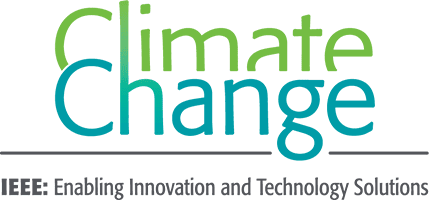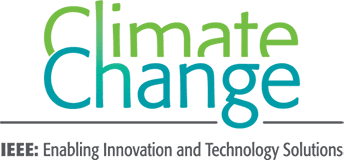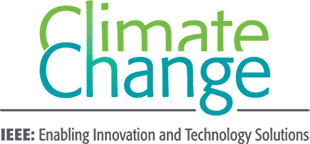Harnessing Healthcare Technology for Greener Patient Wellbeing
Healthcare technology is proving to be a powerful ally in the fight against the impacts of climate change. From reducing carbon emissions through telemedicine to leveraging predictive analytics for early disease detection, healthcare tech is helping us adapt to a rapidly changing world.
NOTE: The views expressed here are solely those of the author and/or interview subject and do not represent positions of IEEE. Some references may require subscription to access content.
Healthcare technology can be a powerful tool in helping communities adapt to a rapidly changing environment. Rising temperatures, extreme weather events, and the spread of diseases are just a few of the consequences of a changing climate, many of which pose significant health risks as noted in the figure below. In addition, the healthcare sector, including pharmaceuticals, biotechnology, equipment, distribution, facilities, and managed healthcare, is estimated to be responsible for 5% of the world’s carbon emissions.
Today, healthcare technology is enabling strategies that help improve the well-being of patients to be more effective and accessible than ever before, from advances in telemedicine to predictive analysis, wearable health technologies, and even new healthcare facilities.
Dr. Paolo Bonato is an active member of the IEEE Engineering in Medicine and Biology Society. He is the founding Editor-in-Chief of the IEEE Open Journal of Engineering in Medicine and Biology. Posted at the Spaulding Rehabilitation Hospital in Boston, MA, USA, Dr. Bonato’s research work is focused on the development of rehabilitation technologies with special emphasis on wearable technology and robotics.
Wearable health technology, including smartwatches and fitness trackers, not only helps individuals monitor their health but also collects valuable data that can be used to assess environmental conditions. For example, wearable devices can track air quality, temperature, and UV radiation levels. This data contributes to a broader understanding of how local environments are changing. Researchers, like Dr. Bonato, can use this information to develop strategies to protect vulnerable populations from climate-related health risks. “My work is focused on technology for rehabilitation applications with emphasis on remote monitoring and services that we can deliver from in-patient to home environments,” he says.
Healthcare technology, specifically predictive analytics [ 1 ], plays a crucial role in identifying and addressing threats from spreading diseases such as malaria, dengue fever, and the COVID-19 virus. Advanced data analysis and machine learning algorithms [ 2 ] can predict disease outbreaks [ 3 ]. By providing early warnings, healthcare systems can mobilize resources, deploy preventive measures, and treat affected individuals promptly, preventing the rapid spread of diseases.
Dr. Bonato points to the article “Can mHealth Technology Help Mitigate the Effects of the COVID-19 Pandemic?” where the authors reviewed how mobile health (mHealth) technologies can be used in monitoring and mitigating the effects of the COVID-19 pandemic [ 4 ]. In their paper “Patterns of Social Vulnerability – An Interactive Dashboard to Explore Risks to Public Health on the US County Level,” the authors studied social vulnerabilities suggesting certain patterns into which populations can be grouped. They demonstrated their methodology using COVID-19 death rate as the hazard and showed that the patterns identified have high predictive capabilities of the pandemic’s local impact [ 5 ].
Remote healthcare delivery system, or telemedicine, has proven to be an influence in reducing carbon emissions associated with traditional healthcare practices by reducing the need for unnecessary travel to medical facilities
[ 6 ],[ 7 ]. Telemedicine also enhances healthcare accessibility in remote areas, making it an essential tool for those in rural locations.
Remote monitoring devices, such as portable ultrasound machines and telemedicine platforms, enable healthcare providers to deliver care in disaster-stricken areas where immediate medical attention is vital. Additionally, drones equipped with medical supplies and diagnostic tools can reach remote or disaster-affected regions quickly. These technological innovations are improving the effectiveness of disaster relief efforts [ 8 ].
Healthcare facilities are notorious for their high energy consumption and carbon emissions. To address this issue, the healthcare sector is now adopting green technologies to reduce its environmental impact [ 9 ]. Solar panels, energy-efficient lighting, sustainable building materials and managing waste [ 10 ], [ 11 ], are just a few examples of how healthcare facilities are becoming more eco-friendly. When constructing the Spaulding Rehabilitation Hospital, architects considered climate change in building the state-of-the-art facility. For example, Spaulding’s combined heat and power plant provides power for the hospital and the local utility during peak periods and heats the hospital’s water from the waste heat captured in the cogeneration process. Additionally, the hospital’s green roof helps insulate the building and absorb stormwater runoff.
Dr. Bonato is proud of his IEEE work and the professional association. “It’s a fabulous professional society to exchange ideas with colleagues from across the world,” he says. “It is wonderful for me to be able to make introductions between young and old colleagues through my IEEE network. It is absolutely irreplaceable.”
[1] A. Gupta and S. Joshi, “Emerging Trends and Scope of Healthcare Analytics,” 2022 International Interdisciplinary Humanitarian Conference for Sustainability (IIHC), Bengaluru, India, 2022, pp. 93-101, doi: 10.1109/IIHC55949.2022.10059883.
[2] M. Bates, “Tracking Disease: Digital Epidemiology Offers New Promise in Predicting Outbreaks,” in IEEE Pulse, vol. 8, no. 1, pp. 18-22, Jan.-Feb. 2017, doi: 10.1109/MPUL.2016.2627238.
[3] Kumar Y, Koul A, Singla R, Ijaz MF. Artificial intelligence in disease diagnosis: a systematic literature review, synthesizing framework and future research agenda. J Ambient Intell Humaniz Comput. 2023;14(7):8459-8486. doi: 10.1007/s12652-021-03612-z. Epub 2022 Jan 13. PMID: 35039756; PMCID: PMC8754556.
[4] C. P. Adans-Dester et al., “Can mHealth Technology Help Mitigate the Effects of the COVID-19 Pandemic?,” in IEEE Open Journal of Engineering in Medicine and Biology, vol. 1, pp. 243-248, 2020, doi: 10.1109/OJEMB.2020.3015141.
[5] D. Coelho, N. Gupta, E. Papenhausen and K. Mueller, “Patterns of Social Vulnerability – An Interactive Dashboard to Explore Risks to Public Health on the US County Level,” 2022 Workshop on Visual Analytics in Healthcare (VAHC), Washington, DC, USA, 2022, pp. 1-9, doi: 10.1109/VAHC57815.2022.10108527.
[6] N. Faruk et al., “On green virtual clinics: A framework for extending health care services to rural communities in Sub-Saharan Africa,” 2017 International Rural and Elderly Health Informatics Conference (IREHI), Lome, Togo, 2017, pp. 1-7, doi: 10.1109/IREEHI.2017.8350380.
[7] N. M. Marzuki, S. Ismail, N. a. -S. Abdul Mohsein and F. Z. Ehsan, “Evaluation of Telehealth implementation in government primary health clinics – A study protocol,” 2012 International Conference on Green and Ubiquitous Technology, Bandung, Indonesia, 2012, pp. 144-148, doi: 10.1109/GUT.2012.6344169.
[8] S. A. Nasseri and F. M. Asrar, “An integrated space-based solution in support of public health during disaster relief,” 2015 7th International Conference on Recent Advances in Space Technologies (RAST), Istanbul, Turkey, 2015, pp. 531-537, doi: 10.1109/RAST.2015.7208402.
[9] J. Possik et al., “An Agent-Based Modeling and Virtual Reality Application Using Distributed Simulation: Case of a COVID-19 Intensive Care Unit,” in IEEE Transactions on Engineering Management, vol. 70, no. 8, pp. 2931-2943, Aug. 2023, doi: 10.1109/TEM.2022.3195813.
[10] S. Dwivedi, A. Poddar, A. Gupta, M. Memoria and R. Kumar, “Analyzing the effectiveness of a health care waste reduction education and training interventions: A step towards green healthcare,” 2022 2nd International Conference on Innovative Sustainable Computational Technologies (CISCT), Dehradun, India, 2022, pp. 1-5, doi: 10.1109/CISCT55310.2022.10046456.
[11] Frazier, R. (2023). Health care has a massive carbon footprint. These doctors are trying to change that. [online] NPR. Available at: https://www.npr.org/2023/10/02/1202389187/hospitals-climate-change#:~:text=UPMC%20signed%20a%20White%20House [Accessed 14 Oct. 2023].



